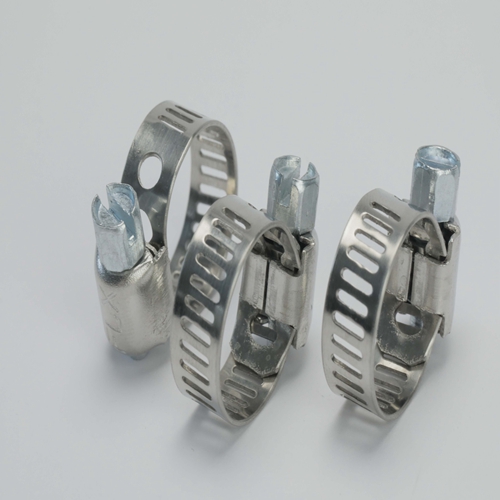- Phone:+86-17331948172 +86-0319-8862898
- E-mail: inquiry@puxingclamp.com
Nov . 10, 2024 19:57 Back to list
Top Manufacturers of Marine Grade Stainless Steel Hose Clamps for Durable Applications
Understanding Marine Grade Stainless Steel Hose Clamps A Comprehensive Guide for Manufacturers
In the marine industry, durability and resistance to corrosion are paramount. This is particularly true for components like hose clamps, which play a critical role in securing hoses and pipes on boats, ships, and other marine vessels. Marine grade stainless steel hose clamps are specifically designed to withstand the demanding conditions of marine environments, making them an essential component for manufacturers in the marine sector. This article explores the significance, features, and manufacturing considerations of marine grade stainless steel hose clamps.
What are Marine Grade Stainless Steel Hose Clamps?
Marine grade stainless steel hose clamps are fasteners made from high-quality stainless steel that is resistant to saltwater and other corrosive elements found in marine environments. Typically, the grade used is 316 stainless steel, which contains molybdenum, providing increased resistance to pitting corrosion compared to regular stainless steel (like 304). This characteristic makes 316 stainless steel the preferred choice for marine applications.
Key Features of Marine Grade Hose Clamps
1. Corrosion Resistance The most crucial feature of marine grade stainless steel hose clamps is their ability to resist corrosion. The harsh conditions of the marine environment, including exposure to saltwater and humidity, can quickly deteriorate lower-grade materials. Marine clamps are built to last, ensuring long-term reliability.
2. Strength and Durability These clamps are designed to provide a strong and secure grip. The high tensile strength of stainless steel combined with precise manufacturing processes ensures that they can withstand high pressure without deformation.
3. Versatility Marine grade hose clamps come in various sizes and designs, catering to a wide range of applications, from small recreational boats to large commercial vessels. The versatility makes them essential for manufacturers who need adaptable solutions to meet diverse customer requirements.
4. Ease of Installation With user-friendly designs, most marine grade hose clamps can be installed quickly and securely. Whether it’s a screw-type or a band clamp, ease of application is a critical factor for manufacturers, facilitating faster assembly and repair processes.
marine grade stainless steel hose clamps manufacturers

Manufacturing Considerations
When manufacturing marine grade stainless steel hose clamps, several factors must be considered to ensure the highest quality and performance
1. Material Selection Choosing the right grade of stainless steel is fundamental. Manufacturers should source high-quality 316 stainless steel to guarantee excellent corrosion resistance and strength. Sourcing from reputable suppliers can minimize the risk of defects.
2. Precision Engineering The manufacturing process must include precise machining and fabrication techniques. CNC (Computer Numerical Control) machining, laser cutting, and advanced bending processes are recommended to achieve exact dimensions and tolerances.
3. Quality Control Implementing strict quality control measures is vital. Inspections should occur at various stages of the manufacturing process, including raw material verification, dimensional inspections, and corrosion resistance tests.
4. Surface Finishing The surface of the clamps should undergo treatments that enhance their resistance to corrosion. Electro-polishing and passivation are commonly used methods that create a smooth finish, reducing the likelihood of accumulating debris and fostering corrosion.
Conclusion
Marine grade stainless steel hose clamps are indispensable components within the marine industry, providing the strength and durability necessary to endure the harshest environments. For manufacturers, focusing on high-quality materials, precision engineering, and thorough quality control processes are essential to delivering superior products. As the marine industry continues to evolve, the demand for reliable and effective hose clamps will remain, pushing manufacturers to innovate and maintain high standards in product development. Understanding the nuances of manufacturing these essential components will aid in producing hose clamps that stand the test of time and meet the rigorous demands of marine applications.
-
Premium 201 Stainless Steel Strip - Durable & Cost-Effective
NewsAug.23,2025
-
Precision High Quality Stainless Steel Strip Coils & Rolls
NewsAug.22,2025
-
Durable Adjustable Hose Clamps for Pipes & Radiators
NewsAug.21,2025
-
Heavy Duty Hose Clamps: Premium Stainless Steel & Adjustable
NewsAug.19,2025
-
Large Stainless Steel Adjustable American Type Hose Clamp - Hebei Pux Alloy Technology Co., Ltd
NewsAug.18,2025
-
Large Stainless Steel Adjustable Hose Clamp - Hebei Pux Alloy|Durable Corrosion Resistance&Adjustable Design
NewsAug.18,2025




